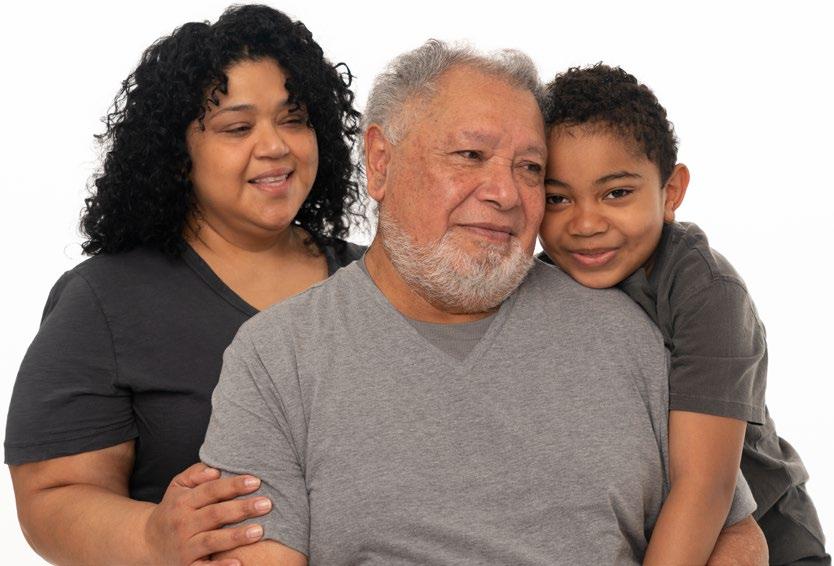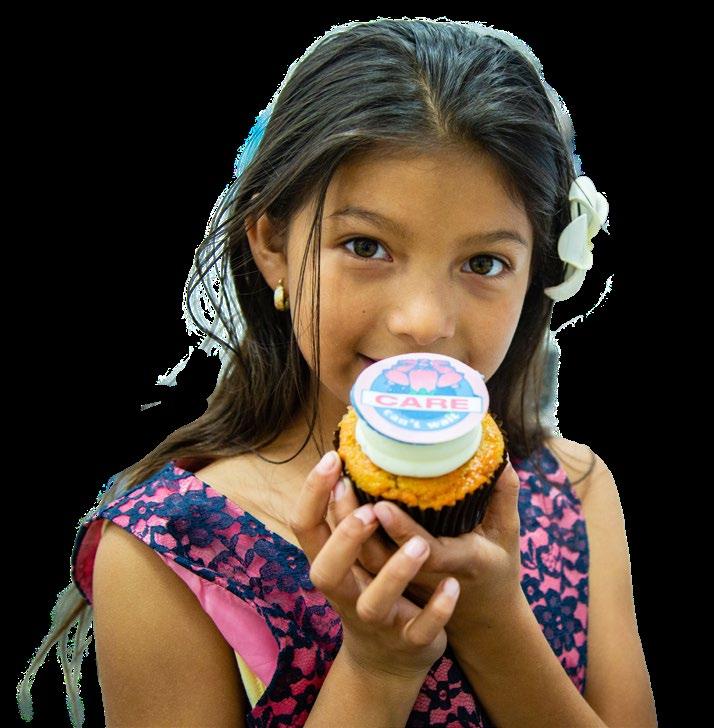GUIDE FOR CAREGIVERS:

Talking to Family, Friends, and Loved Ones About Care





There are over 53 million unpaid caregivers in the U.S., and you might be one of them! At some point in our lives, we will all give or receive care. Care can take many forms: from physical care, like helping a family member get in and out of bed; to emotional care, like keeping your neighbor company so they don’t feel isolated; to self care, like taking a walk to decompress or asking for support when you need it.
You can provide care for anyone — related and chosen family, friends, neighbors, even strangers. Care can be paid or unpaid: paid care is provided by direct care workers, who are most often paid through Medicaid through a mix of state and federal dollars. Family members in some states can also be paid to do direct care work.
Providing care, support, and help to those who need it is so essential to who we are as human beings that many of us don’t think of it as “caregiving.” We just think of it as part of life. Defining caregiving as something we all do is important because it means we can come together under the term “caregiver” to ask for support, advocate for ourselves, and find community. By coming together as caregivers we can work towards collective solutions to the care needs all over the country.
Though we all either are, have been, or will be caregivers in our lives, caregiving can be hard to explain. Many people don’t see themselves as caregivers, even if they provide care on a regular basis. Because care is associated with love, it can be uncomfortable to discuss caregiving as work that is worthy of support or compensation. And due to societal pressures, many of us have been conditioned to want to be able to handle care on our own, and can feel ashamed if we can’t.
That’s why explaining care is so important: it can help us feel connected to each other, find support, and combat the stigmas that keep us from having these essential conversations. Every conversation about care will be different, because people are coming at the issue from different lived experiences and perspectives. But here are a few tips for having the discussion.
Share your personal story: See our next section for a guide. People can connect more to specifics than generalities, which is why sharing your own experience is so powerful.
Find common experiences: Talk about how you’ve seen the person you’re talking to give or receive care in their lives, or use shared care experiences as examples (e.g. discuss a shared family member who you’ve seen give or receive care).
Be specific: For people who are unfamiliar with caregiving, it can be hard to know what caregiving actually entails. Be specific about the number of hours you spend caregiving in an average week, and what kinds of supports you provide, while being aware about sharing sensitive information.
Be patient and sensitive with the person you are speaking with and with yourself: The person you are speaking with may be uncomfortable discussing caregiving, and it may take several conversations to feel like you’re getting somewhere. And if you are finding the conversation difficult, it’s okay to take breaks, come back to the conversation later, or decide the conversation with this person is not serving you.
Sharing your caregiving story can be challenging because it’s deeply personal, but it can also be liberating and a source of advocacy. When sharing your story, remember it is your
experience and only you can share your caregiving story – it’s uniquely yours! This list is meant to serve as a guide, but remember that there is no wrong way to share your story.
Share background information: How and when did you become a caregiver and to whom?

Explain how the journey has been for you: How has becoming a caregiver impacted your life both positively and negatively?
a. Use “I” language (“I’ve experienced a range of emotions since becoming a caregiver…”)
Engage with your loved ones: Ask if they have questions or thoughts.
Look for community and continue sharing your story: There are many resources and groups that encourage the telling of these caregiving stories and that provide a venue for you to do (see a list in the “Resources” section below). You may also opt to share your story with Caring Across Generations and use your story to advocate for policies that can improve the lives of caregivers in your community.
Encourage action: Once you have shared your story, and the needs of those who give and receive care, urge your family and friends to act.

Handling the responsibility of caregiving (even when part of a caregiving team) can be challenging. While everyone is different and circumstances may be unique, it could be time to ask for support when you have lost touch with your friends or family members, you’ve lost interest in what you previously enjoyed, you consistently feel lonely or angry, or you notice changes in your sleeping, eating, or other patterns in your daily life.
Map out who to ask to do what: Make a list of your connections and the people you can ask to help you. Write a list of the chores or activities you need assistance with. Map out which person would be the best fit for each task.
Describe the situation: When you approach someone for help, explain the situation, explain how you’re feeling, and share why you’re asking for this help now.
Make the ask specific and direct: Be direct with what you need and be specific — share details, times, locations, dates, or any other background information that is needed for the person to take on the task.
Say thanks: This is a simple one, but it’s important. Remember to share your thanks with the person who is providing support — it validates their efforts and also makes it more likely they’ll help out again in the future. Everyone likes being recognized for their work.
Find long-term support: Map out how your support network can help you out in the future or even make concrete plans for future support. Find a list of caregiving support groups here (and check out more resources on the next page).

Search for Respite Providers and Programs in your area
The Eldercare Locator helps long-distance caregivers access resources and services in any state
BenefitsCheckUp is a free, online service that lets you screen for federal, state, and some local public and private benefits for any state
Handbook for Long-Distance Caregivers - a guide by the Family Caregivers Alliance
Questions About Caregiving? Call AARP’s Support Line.
5 Tips for Difficult Family Caregiving Conversations - a guide by AARP
AARP Family Caregivers Discussion Group - a public Facebook group
Caregiving Resources & Links for Support - a guide by CaringInfo
Caregiver Stories - a story bank from the Family Caregivers Alliance
What Is A Caregiver? | Johns Hopkins Bayview Medical Center - resources and a quiz to determine if you are a caregiver
Caregiving 101: On Being a Caregiver - a guide by the Family Caregivers Alliance
AKALAKA - A network for adults with intellectual and developmental disabilities and their caregivers